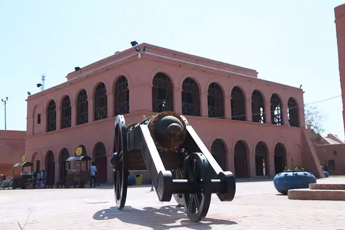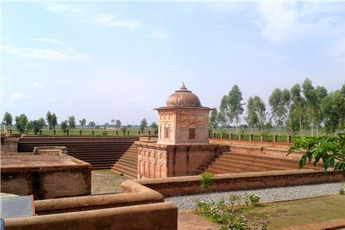One Destination Multiple Places

Jallianwala Bagh
Jallianwala Bagh (Hindi: जलियांवाला बाग) is a public garden in Amritsar in the Punjab state of India, and houses a memorial of national importance, established in 1951 by the Government of India, to commemorate the massacre of peaceful celebrators including unarmed women and children by British occupying forces, on the occasion of the Punjabi New Year on April 13, 1919 in theJallianwala Bagh Massacre.

Punjab Naatshala
"Punjab Naatshala" came into existence with a specific aim of promotion of the art of theatre, by assimilating art with technology to make it more popular among the masses in the modern world of multimedia.
It is known for its shaping and commitment to reality, spreading mass awareness about social evils ang dogmas, enlighteninig people about their social obligations, changing their personal attitudes towards importance of time, dicipline, civic sense and public security along with neat and clean family entertainment.

MAHARAJA RANJIT SINGH PANORAMA
Maharaja Ranjit Singh, more popularly known as ‘the Lion of Punjab’ was not only a great son of Punjab but was also among the few leading figures of the history of that period. The deeds of Maharaja Ranjit Singh will remain as permanent marks in the annals of sikh history.

Wagah border
The lowering of the flags, or the Beating Retreat ceremony at Wagah border near Hussainiwala National Martyrs Memorial, is a daily military practice that the security forces of India (Border Security Force) and Pakistan (Pakistan Rangers) have jointly followed since 1959.[1] The drill is characterized by elaborate and rapid dance-like maneuvers, which has been described as "colourful". It is alternatively a symbol of the two countries\' rivalry, as well as brotherhood and cooperation between the two nations. Leaders have sometimes described it as "ugly".

Harike Wetland
Harike Wetland also known as "Hari-ke-Pattan", with the Harike Lake in the deeper part of it, is the largest wetland in northern India in the border of Tarn Taran Sahib district and Ferozepur district of the Punjab state in India.

Khalsa College
Khalsa College (Punjabi: ਖਾਲਸਾ ਕਾਲਜ khālsā kālaj) is an historic educational institution in the northern Indian city of Amritsar in the state of Punjab, India. Founded in 1892, the sprawling 300-acre (1.2 km2) campus is located about eight kilometers from the city-center on the Amritsar-Lahore highway (part of the Grand Trunk Road), adjoining Guru Nanak Dev University campus, to which Khalsa College is academically affiliated.

Gobindgarh Fort
Gobindgarh Fort is a historic fort located in the center of the city of Amritsar in the Indian state of Punjab. The Fort was earlier occupied by the army but is now open to the public from 10 February 2017.Today the fort is being developed as a unique live museum, as a repository of Punjab’s history.
Popularly known as the Bhangian da Killa (fort of the Bhangis), Gobindgarh Fort is located on the south west fringe of Amritsar, in a square pattern, with a perimeter of 1,000 m and made up entirely of bricks and lime. The fort had 25 canons mounted on its ramparts and it remained with the Bhangirulers till 1805.

Pul kanjri
Pul Kanjari is a historical village situated 35 km away from Amritsar on Amritsar-Lahore road, near the villages of Daoka and Audhar on the Wagah border. It is one of the heritage sites built by Maharaja Ranjit Singh, where he used to rest while travelling with his troops. During his reign, Pul Kanjari was an important trading centre. The legend has it that the village was named after a pul (bridge) that was built by the king for a dancer Moran who was of kanjari caste. It is said that one day while crossing the canal one of her shoes fell into the water which vexed her a great deal and a bridge was constructed on her insistence. This fortress also contains a bathing pool, a temple, a Gurudwara and a mosque which were the secular concern of the Maharaja. The village has a monument built in memory of the Jawans who lost their lives in the 1971 war with Pakistan

